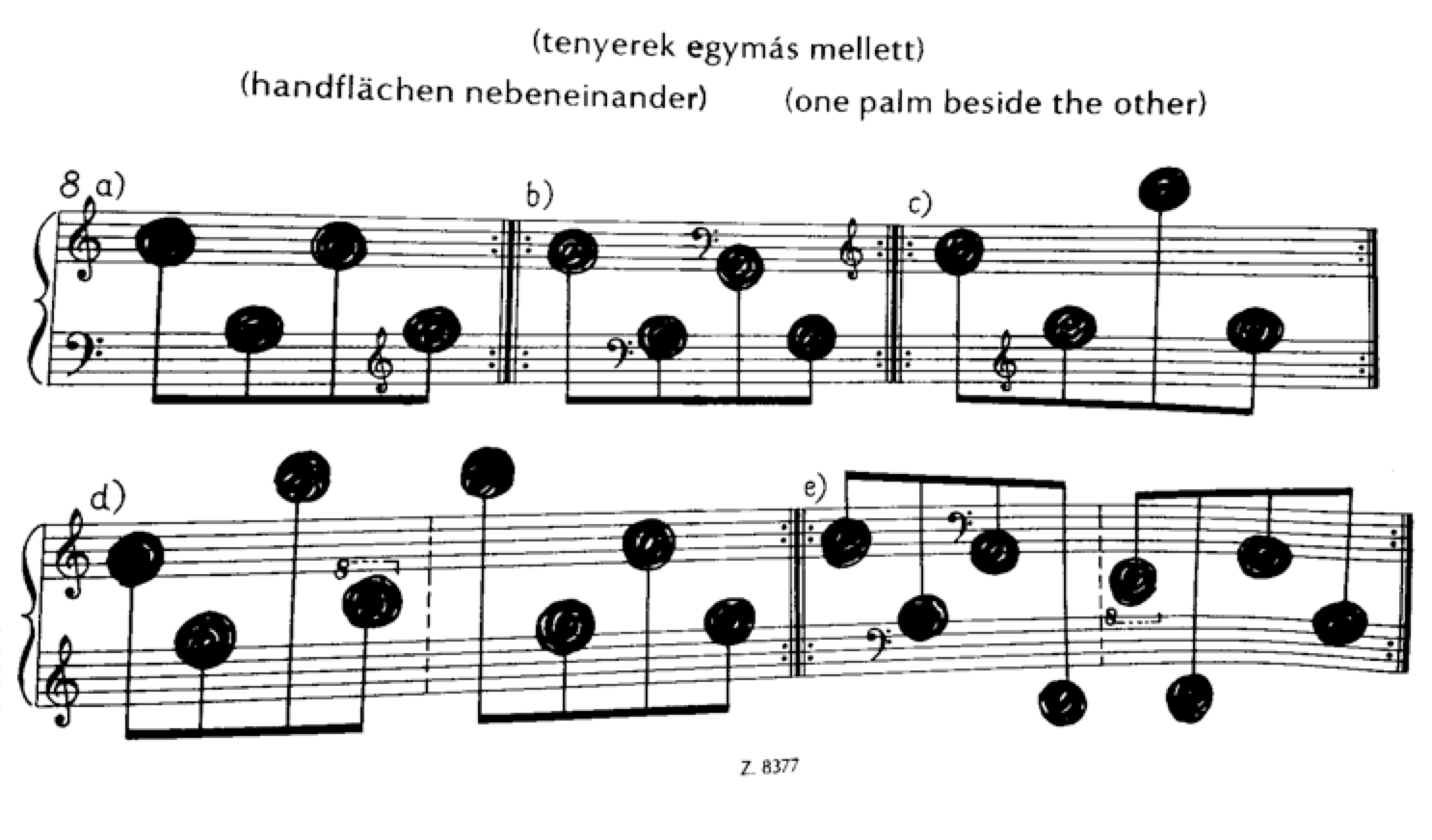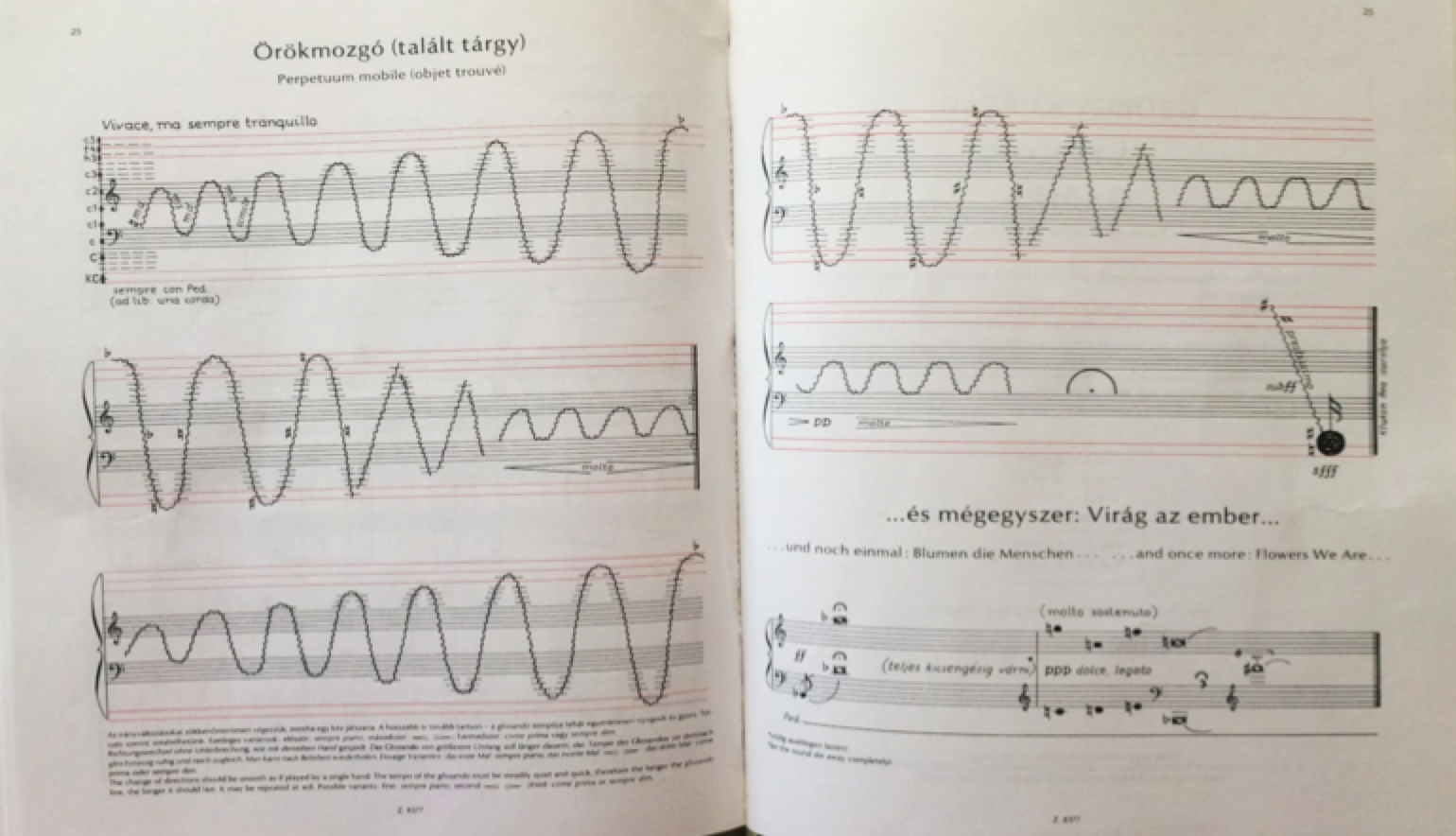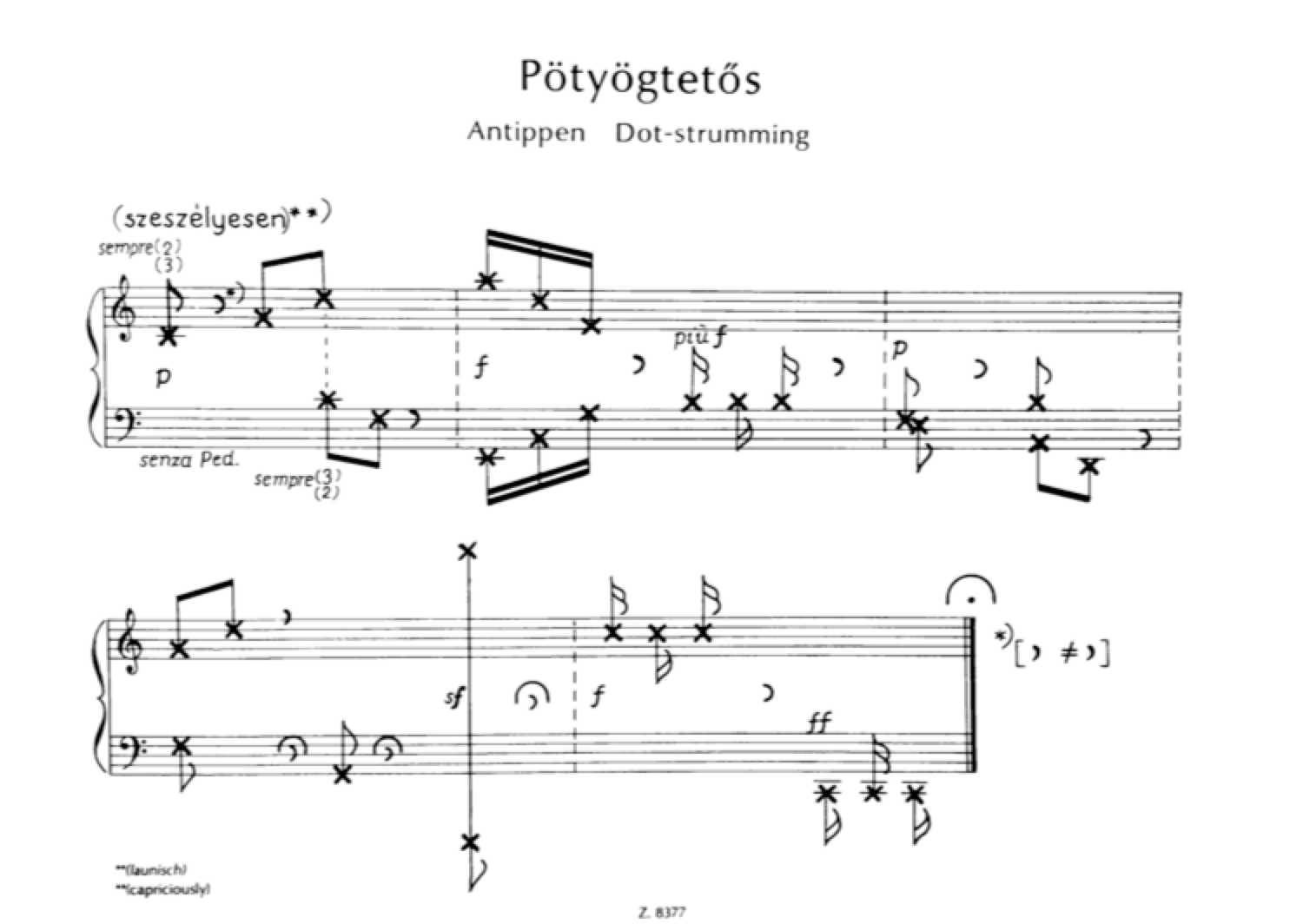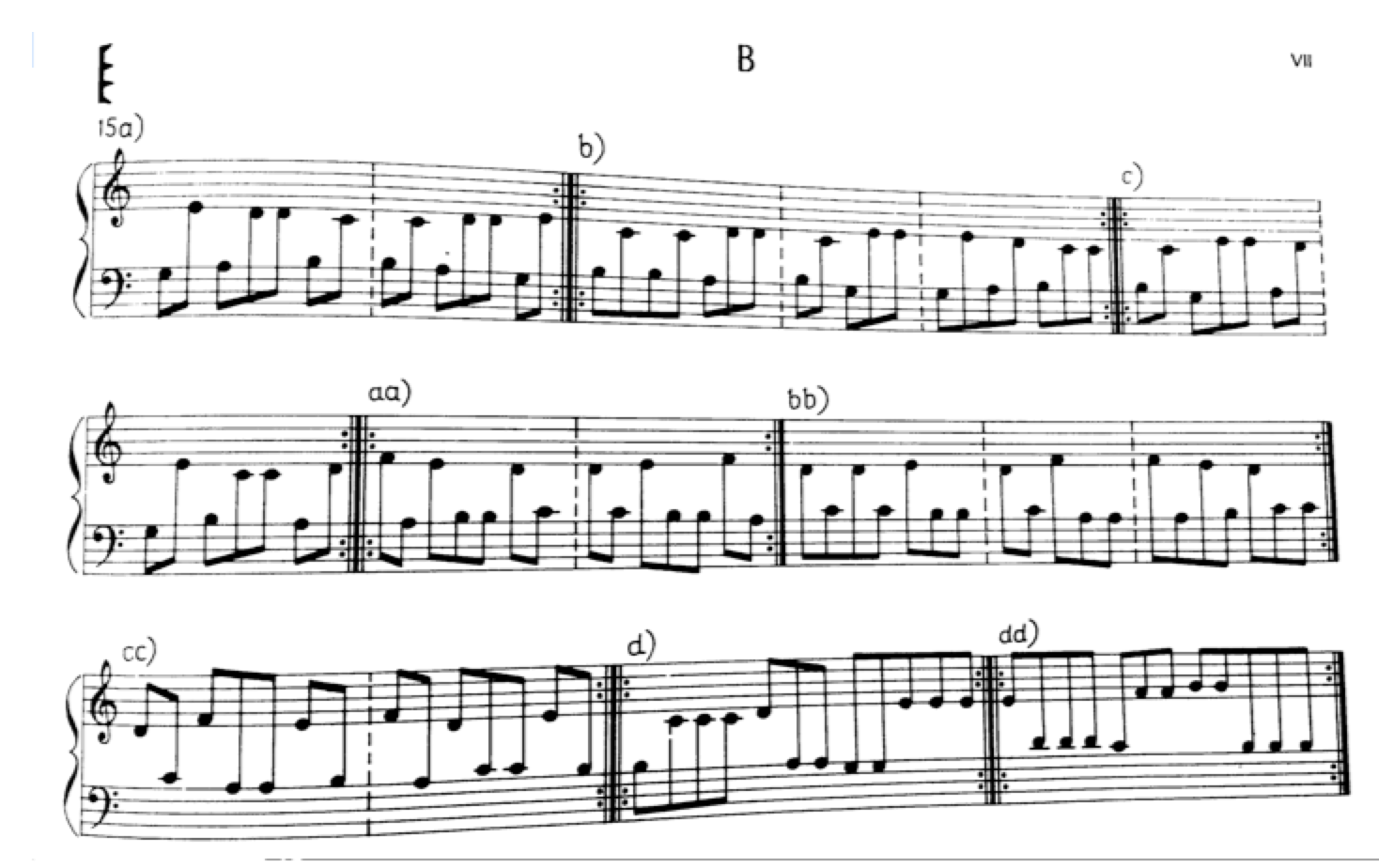

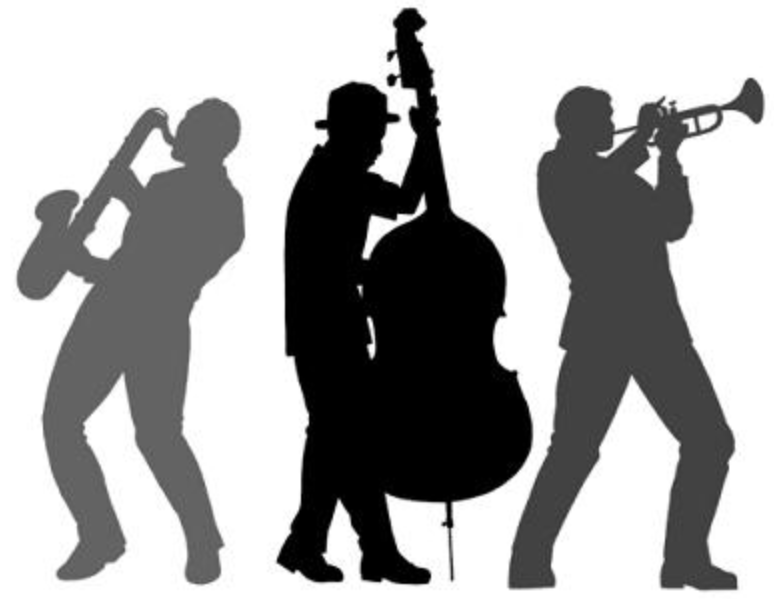
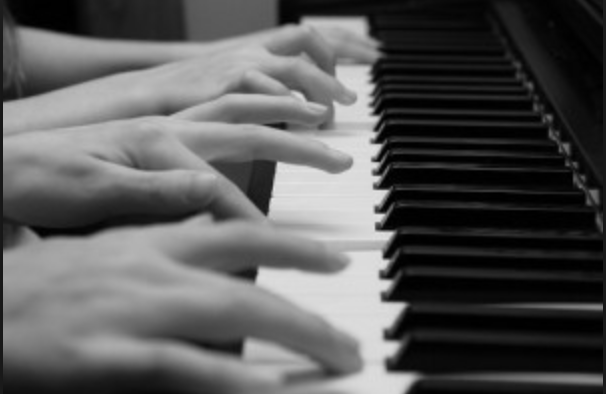
IMPROVISATION
Improvisation is a great tool for composition. It can be very freeing to approach the piano without any preconceived notions of what to write or play.
Before we talk too much let’s try something. Grab a buddy and go to the piano. If you are an amazing trained pianist, forget about that for a moment. Try to not think about what a pianist usually does at the piano. Pretend you just learned what the notes on the piano are, you just learned that notes have corresponding letters and that’s pretty much it. You may treat the piano as something that produces musical or visual patterns. Don’t think about keys, you don’t even know what those are yet (in this pretend scenario, or maybe you actually haven’t really grasped this yet!)
One person start the process, just go hit some keys and whatever pattern the other person perceives from this they should be able to respond in whatever manner they seem fit. Keep at this until you are making a piece! Eventually you will fall into some kind of pattern, it’s human behaviour to find pattern in something.
Nothing about improvisation needs to be perfect, the point of it is to get your mind free from your mind. I know believe me! You’re listening to a seasoned freaker-outer ….. is this the right note? Does this make sense in this key? If I play a B instead of an A, will the world implode? Will dinosaurs come back from fossilized mosquitoes, if I pick the wrong rhythm? Your head is saying yes, but the answer is NO, DUH!
Ok now we can talk a little more about it:
If you get stuck in a certain pattern, try thinking about extending something in the pattern, or changing one of the notes, or changing the rhythm. Also think about range when you’re improvising. You may feel afraid to go beyond where your hands can fit on the piano, but you can just hit any note anywhere on the piano, it may give some variety to your improvisation. If you “mess up” (which should not exist here, but I cannot control your brain so if you feel that you “messed up”) that’s ok! Embrace this, give in to the mess up, Stravinsky did. He once explained a chord to a famous piece by saying his finger slipped when he was playing, and he like that result better.
Improvising with rules attached:
If you’re a rules kinda person, you can try improvising this way. Think of a rule, i.e., everything has to be in the pentatonic scale, or “I can only play the notes C, C sharp, E and F.” Tell your friend the first rule, and then go back and forth and change a rule, and see if the other person can guess the rule you just established. For instance, I played this the other day. We started out only being able to pick one note at a time, this evolved into 3 notes at a time, which evolved to 4 notes being played at different times but still forming a chord, pretty simple, but fun to try and figure out what the other person is doing. And it also turned out to be a natural progression of our improvisation.
There’s a cool book by György Kurtág called Játékok. First of all who is Kurtág? György Kurtág is a Hungarian composer and pianist born in 1926. He cares about the education of young people and about the pure creative process.
The idea behind Játékok:
“The idea of composing Játékok was suggested by children playing spontaneously, children for whom the piano still means a toy. They experiment with it, caress it, attack it and run their fingers over it. They pile up seemingly disconnected sounds, and if this happens to arouse their musical instinct they look consciously for some of the harmonies found by chance and keep repeating them.
Thus, this series does not provide a tutor, nor does it simply stand as a collection of pieces. It is possibly for experimenting and not for learning “to play the piano”. Pleasure in playing, the joy of movement – daring and if need be fast movement over the entire keyboard right from the first lessons instead of the clumsy groping for keys and the counting of rhythms – all these rather vague ideas lay at the outset of the creation of this collection. Playing is just playing. It requires a great deal of freedom and initiative from the performer. On no account should the written image be taken seriously but the written image must be taken extremely seriously as regards the musical process, the quality of sound and silence. We should trust the picture of the printed notes and let it exert its influence upon us. The graphic picture conveys an idea about the arrangement in time of the even the most free pieces. We should make use of all that we know and remember of free declamation, folk-music, parlando-rubato, of Gregorian chant, and of all that improvisational musical practice has ever brought forth. Let us tackle bravely even the most difficult task without being afraid of making mistakes: we should try to create valid proportions, unity and continuity out of the long and short values – just for our own pleasure! ”
Let’s try a few of these games!
